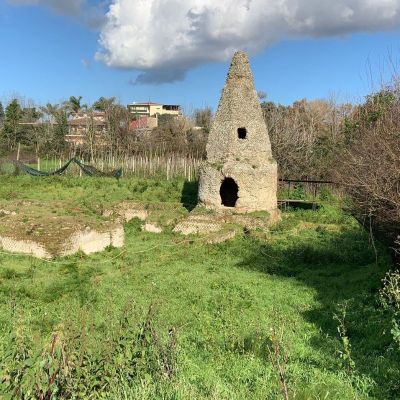Nestled along the glittering Amalfi Coast, Sorrento is a gem that enchants tourists not only with its stunning views but also with its rich culinary heritage. This picturesque town, steeped in history and culture, offers a gastronomic adventure that tantalizes the taste buds, especially when it comes to desserts. Sorrento is renowned for its traditional desserts, a delightful fusion of local ingredients and time-honored recipes that reflect the soul of this charming Italian locale.
In this article, we dive into the sweet world of Sorrento’s bakeries. From the creamy richness of cannoli to the zesty tang of delizia al limone, we will explore the traditional desserts that have put Sorrento on the culinary map. We’ll take you on a journey through the best pastry shops and bakeries, revealing where to find these mouth-watering treats and what makes them so special. Get ready to indulge in the flavors that define Sorrento’s dessert scene and learn why these sweet delicacies are not just food, but a part of Sorrento’s heart and soul.
Table of Contents
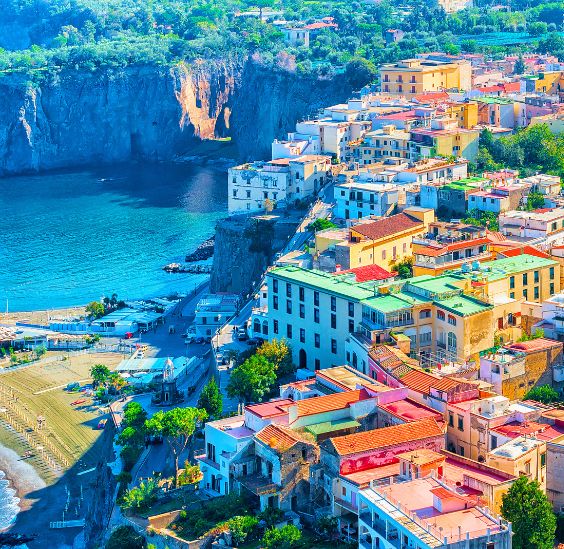
The town’s sweet treats are more than just confections; they are a narrative of Sorrento’s past and present.
The Essence of Traditional Sorrento Desserts
Sorrento’s dessert culture is a tapestry woven with history, tradition, and a love for quality ingredients. The town’s sweet treats are more than just confections; they are a narrative of Sorrento’s past and present. Key to understanding this are the ingredients typical to the region – like locally produced ricotta, fragrant lemons, and handcrafted chocolates – which are the heart and soul of these desserts.
One cannot talk about Sorrento’s desserts without mentioning its vibrant history. These recipes have been passed down through generations, often closely guarded secrets within families. They are a reflection of the town’s cultural influences, blending Italian culinary art with hints of foreign touches brought by various conquerors and traders over the centuries.
At the forefront of these traditional desserts is the famous Cannoli. Originally from Sicily, Cannoli found a unique interpretation in Sorrento. Here, the crisp, golden shells are filled with a lusciously creamy mixture of ricotta, sugar, and sometimes a hint of lemon zest or chocolate chips, creating a delightful contrast of textures and flavors.
Another star is the Delizia al Limone, a true embodiment of Sorrento. This dessert, literally translating to ‘lemon delight’, is a sponge cake soaked in a lemony syrup, layered with a smooth lemon cream, and often crowned with a delicate glaze or a zest of Sorrento lemon. It’s not just a dessert; it’s an ode to the lemons that are an integral part of Sorrento’s landscape and culinary identity.
These desserts are not just about taste; they are about the experience. Eating a traditional Sorrento dessert is like taking a journey through the town’s charming streets, orchards laden with citrus fruits, and the warm hospitality of its people. It’s about the joy of sitting in a quaint café, savoring a slice of history, and feeling connected to the generations of artisans who have perfected these recipes.
In the following sections, we will delve deeper into the famous desserts of Sorrento, explore the unique charm of its pastry shops, and guide you through the best bakeries in town. Stay tuned for a sweet adventure that promises to be as delightful as the desserts themselves.
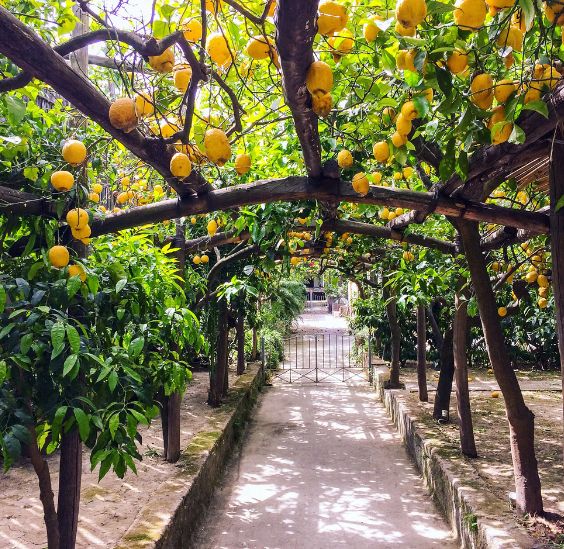
Exploring the Famous Sorrento Desserts
As we delve deeper into Sorrento’s dessert panorama, two famous treats stand out: the Cannoli and the Delizia al Limone. Each of these desserts tells a story, a culinary narrative steeped in tradition and local flavor.
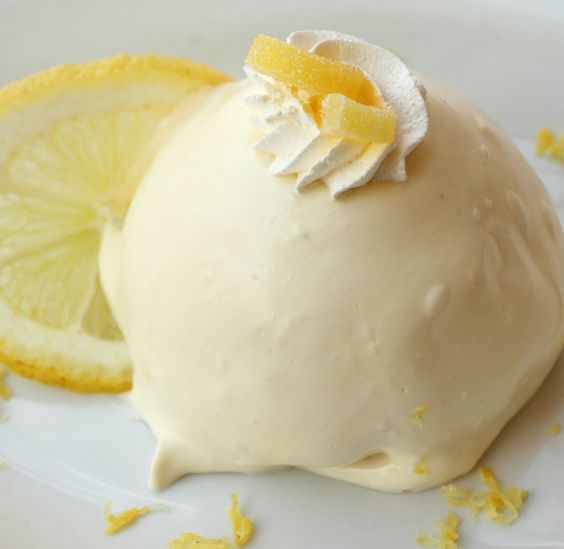
Cannoli: A Taste of Tradition
The Cannoli, a Sicilian creation that Sorrento has embraced and made its own, is an iconic Italian dessert. In Sorrento, they are crafted to perfection, with each component speaking of quality and tradition. The shell, a crispy, golden-brown tube, is the first to greet your senses, often still warm from the fryer. The filling, a creamy and slightly sweetened ricotta, is the heart of the Cannoli. In Sorrento, they often add a twist with local ingredients like lemon zest or tiny chocolate chips, infusing a distinct touch to this classic dessert.
Eating a Cannoli in Sorrento is an experience – from the first crunch of the shell to the rich, smooth ricotta that follows. It’s not just a dessert; it’s a celebration of local ingredients and time-honored culinary practices.
Delizia al Limone: A Lemon Lover’s Dream
Delizia al Limone, a dessert as picturesque as Sorrento itself, is a testament to the town’s love affair with lemons. This dessert, often described as a ‘cloud of lemon’, consists of a light, airy sponge cake, soaked in a sweet lemon syrup, layered with a velvety lemon cream, and often topped with a light glaze or a sprinkle of lemon zest.
The lemons used in Delizia al Limone are not ordinary lemons; they are Sorrento lemons, known for their fragrant aroma and slightly sweet flavor. The result is a dessert that is tangy yet balanced, rich yet refreshing – a perfect embodiment of Sorrento’s culinary spirit.
Babà and Sfogliatella: The Unsung Heroes of Sorrento’s Dessert Scene
While Cannoli and Delizia al Limone often steal the spotlight, Sorrento’s dessert scene would be incomplete without mentioning Babà and Sfogliatella. These traditional pastries, each with a unique history and flavor profile, are essential experiences for any dessert aficionado visiting Sorrento.
Babà: A Delightful Soak in Tradition
The Babà, a small yeast cake saturated in rum or limoncello syrup, is a staple in Sorrento’s bakeries. Originally from Poland and brought to Italy in the 18th century, it has become a beloved treat in the region. Sorrento’s version often involves a generous soaking in locally produced limoncello, giving it a distinctive Amalfi Coast twist.
The texture of Babà is what sets it apart – it’s spongy, moist, and rich, with the syrup providing a sweet yet potent kick. In Sorrento, it’s commonly served as a dessert after a meal, often accompanied by a dollop of whipped cream or fresh fruits.
Sfogliatella: A Crispy, Creamy Masterpiece
Sfogliatella, another gem in the crown of Sorrento’s pastry offerings, is a shell-shaped filled pastry whose name translates to “small, thin leaf/layer,” indicative of its multiple layers of dough. There are two main types: the riccia (curly) and frolla (smooth). The riccia is characterized by its crispy layers, while the frolla boasts a softer, more tender texture.
The filling is a sweet, aromatic mixture of ricotta cheese, sugar, eggs, and often a hint of citrus or cinnamon. Each bite of Sfogliatella offers a delightful contrast between the crisp (or tender) outer shell and the creamy, rich interior, making it a favorite among both locals and tourists.

The Charm of Sorrento Pastry Shops
The pastry shops of Sorrento are as much a part of the town’s charm as its picturesque streets and stunning coastlines. These shops, often family-run and steeped in history, are not just places to buy desserts; they are cultural hubs, places where the community’s heart beats.
A Blend of Tradition and Warmth
Walking into a Sorrento pastry shop is like stepping into a story. The air is sweet with the scent of baking, the counters are a kaleidoscope of colorful confections, and the walls often tell tales of the shop’s history. Many of these pastry shops have been around for generations, their recipes and techniques passed down and perfected over time.
The pastry chefs here are not just bakers; they are custodians of tradition, artisans who take pride in their craft. They are always ready to share a story, whether it be about the origins of a dessert or a secret ingredient that makes their version unique.
More Than Just a Sweet Treat
These pastry shops are gathering places for locals and tourists alike. They are spaces where you can enjoy a moment of sweetness, accompanied by a cup of coffee or a glass of local limoncello. It’s common to see people engaged in lively conversations, often with a plate of pastries at the center.
Each shop has its own personality, reflecting the character of its owners and the history of its location. Some may boast elegant interiors and a wide array of desserts, while others are cozy, homey spots with a more focused selection. What they all share is a commitment to quality and a passion for sharing their culinary heritage.

Sorrento’s Best Bakeries: A Guided Tour
When in Sorrento, a visit to its finest bakeries is a must for any dessert enthusiast. Each bakery has its own charm, offering an array of traditional desserts that encapsulate the essence of Sorrento’s sweet culinary culture. Let’s embark on a guided tour of some of the best bakeries in Sorrento, where the art of dessert-making comes to life.
#1 Pasticceria Bar Romano

Pasticceria Bar Romano is more than just a bakery; it’s a culinary landmark in Sorrento. Known for its exquisite Delizia al Limone, this bakery captures the essence of Sorrento’s love for lemons. Their version of this dessert is a harmonious blend of soft sponge cake, zesty lemon cream, and a light, sweet glaze, making it a favorite among both locals and tourists. The atmosphere of the bakery, with its traditional décor and welcoming staff, adds to the overall delightful experience.
#2 Momi Sorrento

Momi Sorrento is a celebration of authentic Sorrento flavors. The bakery specializes in both classic and innovative desserts, with each creation reflecting a deep respect for traditional recipes. Their Cannoli are particularly noteworthy – the shells are flawlessly crisp, enclosing a filling that’s the perfect balance of sweet and creamy, often infused with a hint of locally sourced lemon or orange.
#3 Bar Pasticceria Fiorentino

Bar Pasticceria Fiorentino is a treasure trove of classic Sorrento pastries. This bakery prides itself on its Cannoli, which are known for their perfectly crisp shells and rich, smooth ricotta filling, often enhanced with subtle hints of citrus or chocolate. The ambiance here is cozy and inviting, reflecting the bakery’s long-standing tradition and passion for pastry making. It’s a place where each dessert is a reflection of Sorrento’s culinary heritage.
#4 Buonocore Gelateria
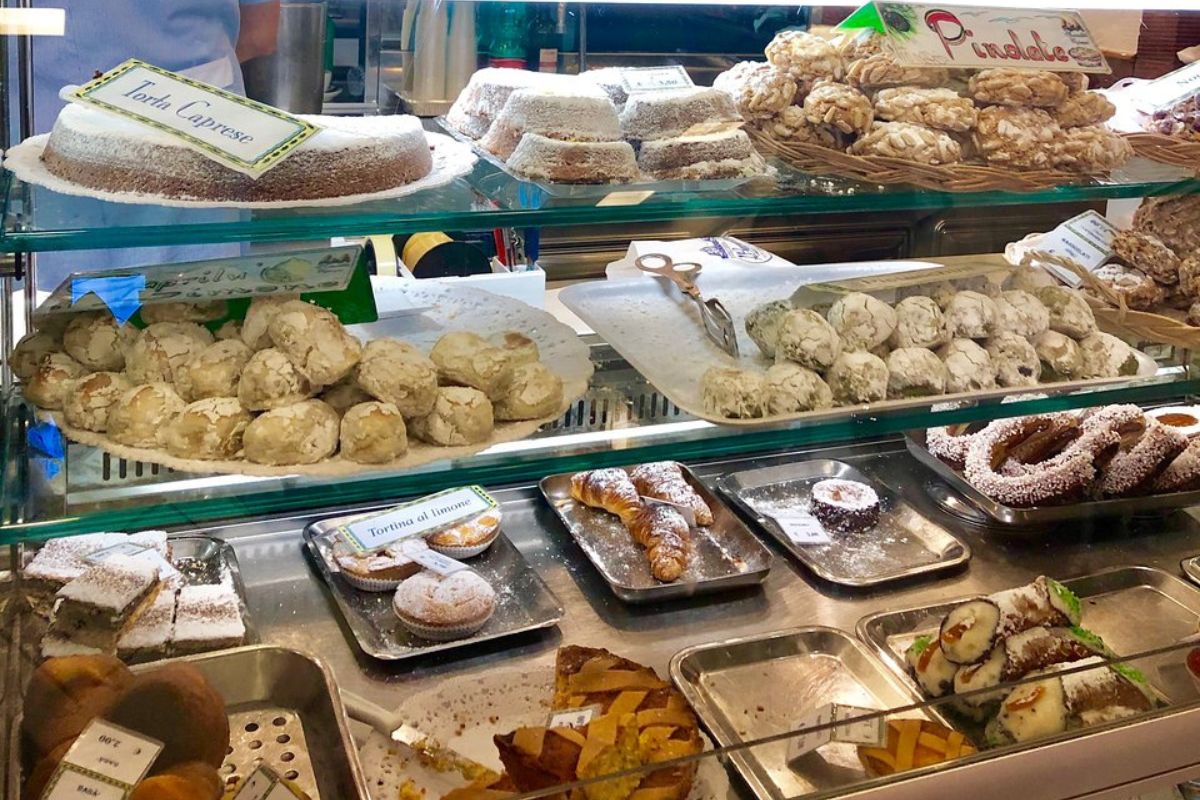
Buonocore Gelateria is another top pick from Reddit users, famous for its artisanal gelato made fresh daily. Known for its rich flavors and smooth texture, this gelateria is particularly noted for its house-made cones that add an extra layer of indulgence to the gelato experience. Visitors often rave about their nut-based flavors and the charming ambiance of the shop.
Finding the Best Cannoli and Delizia al Limone in Sorrento
To discover the best Cannoli and Delizia al Limone in Sorrento, venturing off the beaten path is key. The most authentic and delicious experiences are often found in smaller, less touristy bakeries that are cherished by the locals.
Tips for the Perfect Dessert Experience
Freshness is Crucial: For Cannoli, look for a shell that is crispy and a filling that is creamy and fresh. For Delizia al Limone, seek out cakes with moist sponge and vibrant lemon flavor.
Local Recommendations: Don’t hesitate to ask Sorrento’s locals for their favorite bakery suggestions – they know best!
Explore Beyond the Main Streets: The hidden gems are often located in the quieter, less crowded areas of Sorrento.
Timing Matters: Visit bakeries early in the day for the freshest pastries, as this is when they are most likely to offer the best taste and texture.

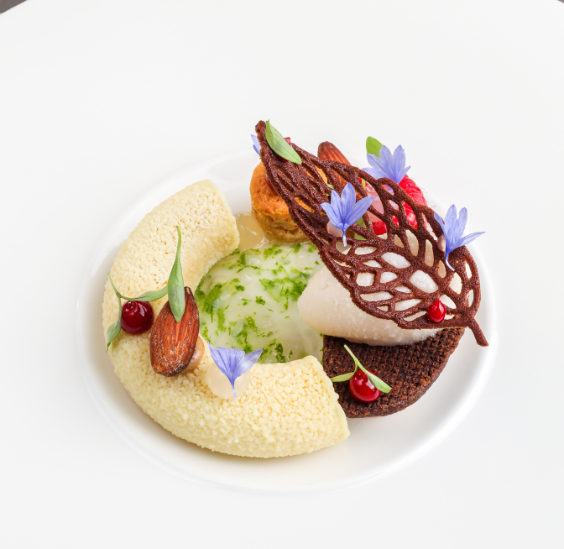
Savoring Sorrento’s Sweet Traditions
As you explore the winding streets of this enchanting town, let your taste buds guide you to these culinary havens. Each bakery, with its unique character and specialties, invites you to immerse yourself in the sweet essence of Sorrento. Whether you’re a long-time lover of Italian pastries or discovering them for the first time, the bakeries of Sorrento are sure to leave you with lasting memories and a desire to return. So, as you wander through Sorrento, take the time to stop, taste, and relish the sweet delicacies that are as much a part of this beautiful town as its stunning vistas and warm hospitality. Buon viaggio and even sweeter indulgences!



